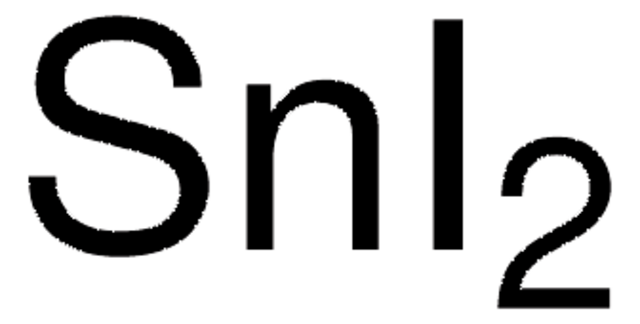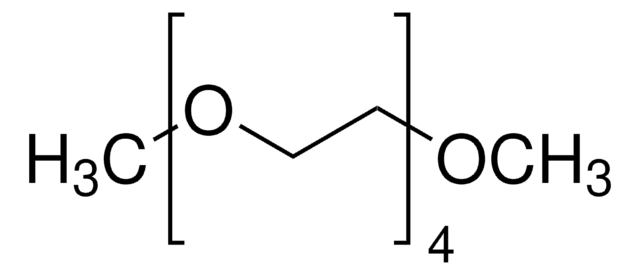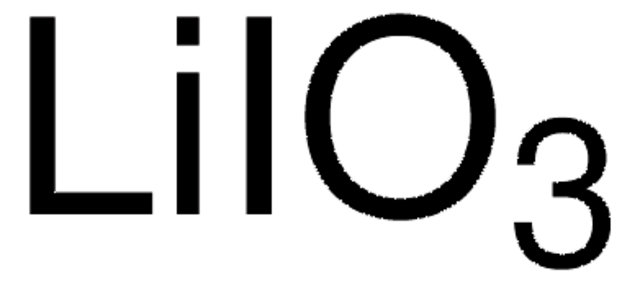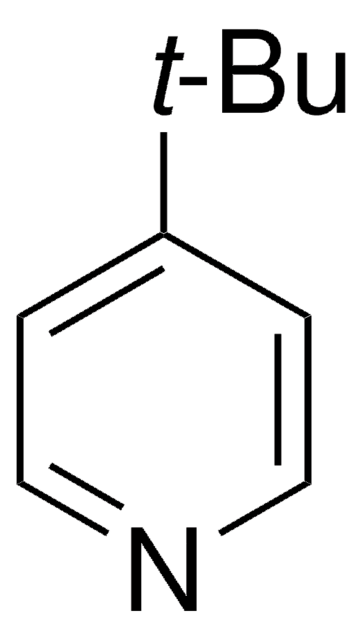Kluczowe dokumenty
518018
Lithium iodide
99.9% trace metals basis
Synonim(y):
Jodek litu(1+)
About This Item
Polecane produkty
klasa czystości
for analytical purposes
Próba
99.9% trace metals basis
Formularz
powder
charakterystyka ekologicznej alternatywy
Design for Energy Efficiency
Learn more about the Principles of Green Chemistry.
sustainability
Greener Alternative Product
zanieczyszczenia
≤1500.0 ppm Trace Metal Analysis
mp
446 °C (lit.)
gęstość
3.49 g/mL at 25 °C (lit.)
kategoria ekologicznej alternatywy
ciąg SMILES
[Li+].[I-]
InChI
1S/HI.Li/h1H;/q;+1/p-1
Klucz InChI
HSZCZNFXUDYRKD-UHFFFAOYSA-M
Szukasz podobnych produktów? Odwiedź Przewodnik dotyczący porównywania produktów
Opis ogólny
Zastosowanie
- To prepare biodegradable polymer electrolytes.Rice starch complexed with LiI shows enhanced ionic conductivity as theaddition of LiI increases the number of mobile charge carriers.
- For Li-S batteries. LiIforms a protective coating on the surface of both negative and positiveelectrodes and prevents the dissolution of polysulfides on the cathode sidewhich significantly enhances cell rate performance.
Kod klasy składowania
11 - Combustible Solids
Klasa zagrożenia wodnego (WGK)
WGK 3
Temperatura zapłonu (°F)
Not applicable
Temperatura zapłonu (°C)
Not applicable
Środki ochrony indywidualnej
dust mask type N95 (US), Eyeshields, Gloves
Wybierz jedną z najnowszych wersji:
Masz już ten produkt?
Dokumenty związane z niedawno zakupionymi produktami zostały zamieszczone w Bibliotece dokumentów.
Klienci oglądali również te produkty
Produkty
Research and development of solid-state lithium fast-ion conductors is crucial because they can be potentially used as solid electrolytes in all-solid-state batteries, which may solve the safety and energy-density related issues of conventional lithium-ion batteries that use liquid (farmable organic) electrolytes.
Lithium-Ion Battery Performance: Dependence on Material Synthesis and Post‑Treatment Methods
Nasz zespół naukowców ma doświadczenie we wszystkich obszarach badań, w tym w naukach przyrodniczych, materiałoznawstwie, syntezie chemicznej, chromatografii, analityce i wielu innych dziedzinach.
Skontaktuj się z zespołem ds. pomocy technicznej











